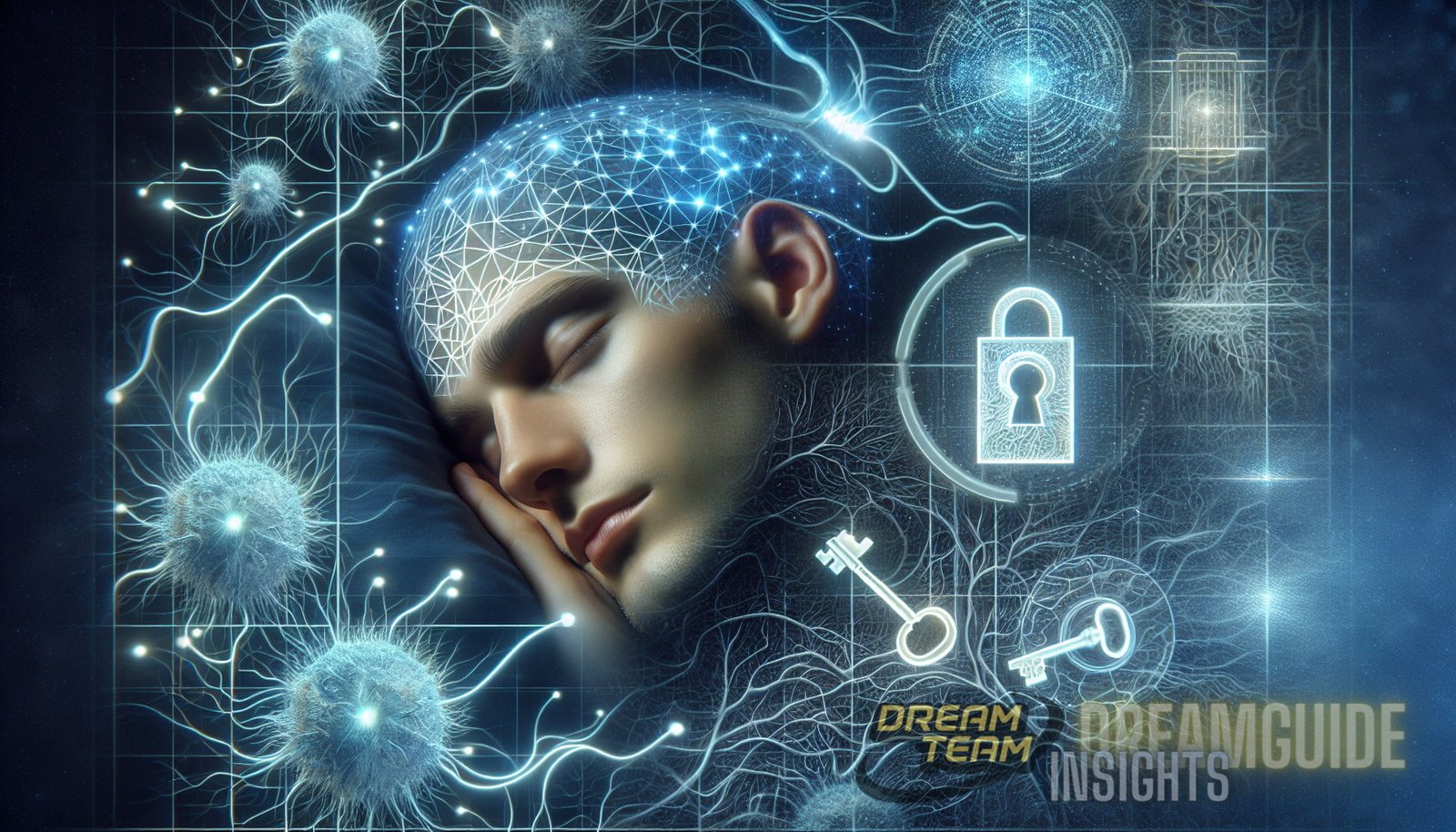Introduction
Dreams have long fascinated and perplexed human beings, serving as a gateway to a realm that is both enigmatic and captivating. Throughout history, individuals have sought to decipher the meaning behind dreams and explore their relationship with reality. This article delves into the intersection of dreams and reality, aiming to analyze and unmask this intriguing phenomenon. By examining the formation and narratives of dreams, we can gain a deeper understanding of the connection between dreams and reality.
Dream Formation
One of the key aspects in understanding dreams and their relationship with reality is exploring how dreams are formed. The formation of dreams is a complex and multifaceted process that involves various factors and stages. In order to comprehend dream formation, it is necessary to consider both biological and psychological perspectives.
From a biological standpoint, dreams are believed to originate in the brain during the rapid eye movement (REM) stage of sleep. Research has shown that during REM sleep, the brain undergoes processes that contribute to the generation of dreams. Increased neural activity in regions associated with memory, emotion, and perception has been observed during REM sleep, suggesting a correlation between brain activity and dream formation.
Psychologically, dreams are influenced by a variety of factors, such as personal experiences, emotions, and subconscious thoughts. According to Sigmund Freud, a pioneering figure in dream analysis, dreams serve as the “royal road to the unconscious.” Freud believed that dreams provide an avenue for repressed desires, anxieties, and unresolved conflicts to manifest. Through symbols and hidden meanings, dreams offer insights into the inner workings of the human mind.
Want to learn more about dream formation? Check out this insightful article which delves deeper into the subject.
The Role of the Subconscious Mind
A significant aspect of dream formation is the role of the subconscious mind. The subconscious mind encompasses the thoughts, desires, and memories that lie beneath the surface of our conscious awareness. During sleep, the subconscious mind becomes more pronounced, leading to the manifestation of these hidden elements in the form of dreams.
When we dream, our subconscious mind has the freedom to express itself without the constraints imposed by our conscious mind. This is why dreams often contain elements that are bizarre, illogical, or emotionally charged. The subconscious mind weaves together fragments of memories, emotions, and desires to create dream narratives that can be both intriguing and bewildering.
Dream Narratives
Dream narratives refer to the stories, scenarios, and events that unfold within the realm of dreams. Analyzing dream narratives is crucial in deciphering the relationship between dreams and reality. Dreams can take on a myriad of forms, ranging from mundane and realistic to fantastical and surreal. By examining the content and structure of dreams, we can gain insights into the ways in which our subconscious mind interacts with our conscious reality.
It is important to note that dream narratives can vary greatly between individuals. While some people may experience vivid and detailed dreams, others may have more fragmented and fleeting dream experiences. The nature of dream narratives is influenced by various factors such as personality traits, life experiences, and emotional states.
Dream narratives often incorporate elements that are familiar to the dreamer, such as people, places, and events from their waking life. However, these familiar elements are often presented in a distorted or symbolic manner. This distortion can make it challenging to discern the true meaning behind the dream, as it requires unraveling the hidden symbols and deciphering the underlying messages.
Curious to explore dream narratives further? Visit this comprehensive article that delves into the intricacies of dream narratives.
Symbols and Meanings in Dreams
One of the key aspects of analyzing dream narratives is deciphering the symbols and hidden meanings embedded within them. Dreams often utilize symbols to represent unconscious thoughts, desires, and emotions. These symbols can be unique to each individual or have universal meanings that are shared across cultures.
Carl Jung, a renowned psychiatrist and psychoanalyst, proposed the concept of collective unconscious, suggesting that certain symbols and archetypes are inherited and shared by all humans. According to Jung, the collective unconscious manifests in dreams through symbols, providing insights into our shared human experiences and the underlying aspects of our psyche.
Decoding dream symbols requires careful analysis and interpretation. For example, common symbols such as water, flying, or falling can have a range of meanings depending on the context and the dreamer’s personal associations. Dream journals and personal reflection can help individuals identify recurring symbols and establish their unique symbolism.
Dreams and Reality: Interpreting the Intersection
The intricate relationship between dreams and reality has been the subject of numerous theories and interpretations throughout history. Various perspectives have sought to capture the essence of this intersection, shedding light on the significance of dreams in our waking lives.
Dreams as Reflections of Reality
One perspective posits that dreams are reflections or manifestations of our daily experiences and thoughts. This view suggests that dreams serve as a means of processing and integrating information from our waking lives. Through dreams, we can make sense of our experiences, resolve conflicts, and gain new perspectives on reality.

In support of this view, research has shown that dreams often incorporate elements from our waking lives. People may dream about familiar people, places, or events that they have encountered recently. Dreams can also reflect our emotional state or current concerns, offering insights into our conscious reality.
Dreams as Unconscious Desires and Fears
Another perspective, influenced by the theories of Sigmund Freud, posits that dreams are a reflection of our unconscious desires, fears, and conflicts. According to Freud, dreams allow us to satisfy forbidden or repressed wishes in a disguised and symbolic manner. The bizarre and illogical nature of dreams is believed to stem from the unconscious mind’s attempt to express these hidden desires.
For example, a person may have a recurring dream about being chased, which could symbolize a fear of confrontation or running away from a challenging situation. Analyzing the symbols and narratives in dreams can provide valuable insights into our subconscious desires and fears, allowing us to gain a deeper understanding of ourselves.
The Scientific Approach to Dream Interpretation
Given the enigmatic nature of dreams, numerous methods and techniques have been developed to interpret and analyze dream narratives. The scientific approach to dream interpretation aims to unravel the meaning behind dreams by utilizing empirical evidence and psychological principles.
One popular approach is the systematic analysis of dream content. Researchers and psychologists have developed coding systems to classify and analyze the different elements present in dream narratives. These coding systems involve categorizing factors such as characters, emotions, settings, and actions in order to identify patterns and themes within dreams.
Studies utilizing these coding systems have shed light on the prevalence of certain themes in dreams. For example, common themes such as falling, flying, or being chased have been observed in dreams across cultures and individuals. The scientific analysis of dream content provides a valuable framework for understanding the underlying meanings and symbols in dreams.
The Importance of Personal Reflection
While scientific methods can offer valuable insights, it is important to emphasize the role of personal reflection in dream interpretation. Dreams are deeply personal experiences that are intricately linked to an individual’s unique thoughts, emotions, and experiences.
Keeping a dream journal and reflecting on dream narratives can help individuals establish their own personal associations and meanings. By maintaining a record of their dreams and analyzing patterns over time, individuals can gain a deeper understanding of their own dream symbols and narratives.
The Practical Applications of Dream Reality Analysis
The intersection of dreams and reality carries implications beyond the realm of psychology and scientific inquiry. The study and analysis of dreams have practical applications in various fields, ranging from therapy and counseling to creativity and problem-solving.
Dream Analysis in Therapy
Dream analysis has long been used as a therapeutic tool in various forms of psychotherapy, including psychoanalysis and cognitive-behavioral therapy. Exploring dream narratives can provide therapists with valuable insights into their clients’ unconscious thoughts, emotions, and past experiences.
By interpreting dream symbols and narratives, therapists can help clients uncover unresolved conflicts, gain self-awareness, and identify potential psychological barriers. Dream analysis can serve as a catalyst for personal growth and facilitate the therapeutic process.
Creativity and Problem-Solving
Dreams have also been a source of inspiration and creativity for artists, writers, and inventors throughout history. The surreal and imaginative nature of dreams can unlock new ideas, perspectives, and solutions to creative challenges.
Keeping a dream journal and actively exploring dream narratives can fuel the creative process. Artists and writers often draw inspiration from their dreams, incorporating dream elements into their works. Dream image incubation, a technique used by inventors, involves focusing on a problem before sleep and allowing the dream state to provide insights and solutions.
In Conclusion
The intersection of dreams and reality is a fascinating subject that has captivated humanity for centuries. Dreams provide a gateway to the enigmatic realm of the subconscious mind, offering insights into our desires, fears, and unresolved conflicts. By analyzing the formation and narratives of dreams, we can gain a deeper understanding of the intricate relationship between dreams and reality. Dream reality analysis encompasses both scientific approaches and personal reflection, providing valuable insights into the meanings and symbolism embedded within dreams.
The study of dreams and their intersection with reality carries practical applications in various fields, ranging from therapy and counseling to creativity and problem-solving. The enigmatic nature of dreams continues to captivate human beings, driving us to uncover the secrets that lie within this enigmatic realm.


